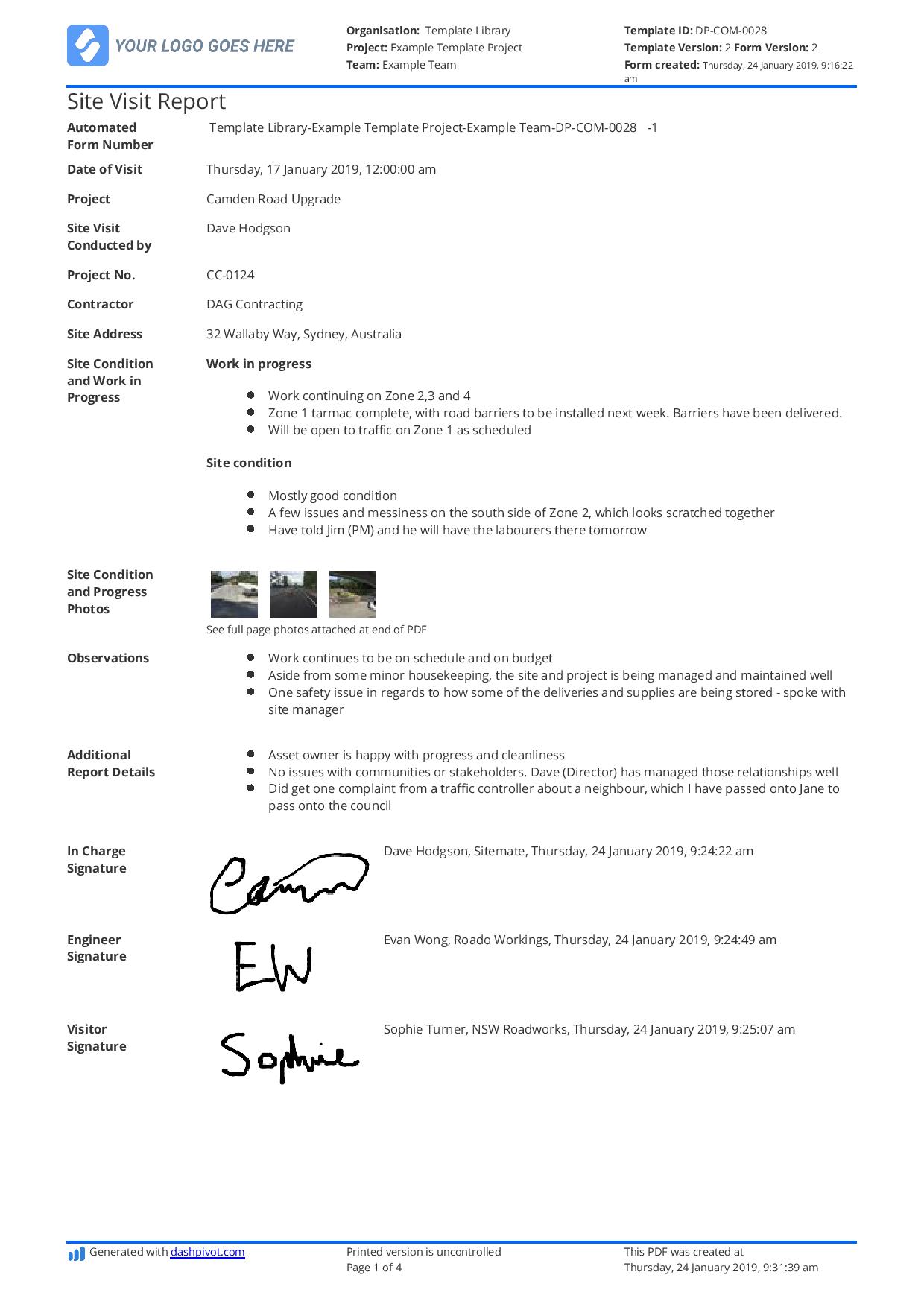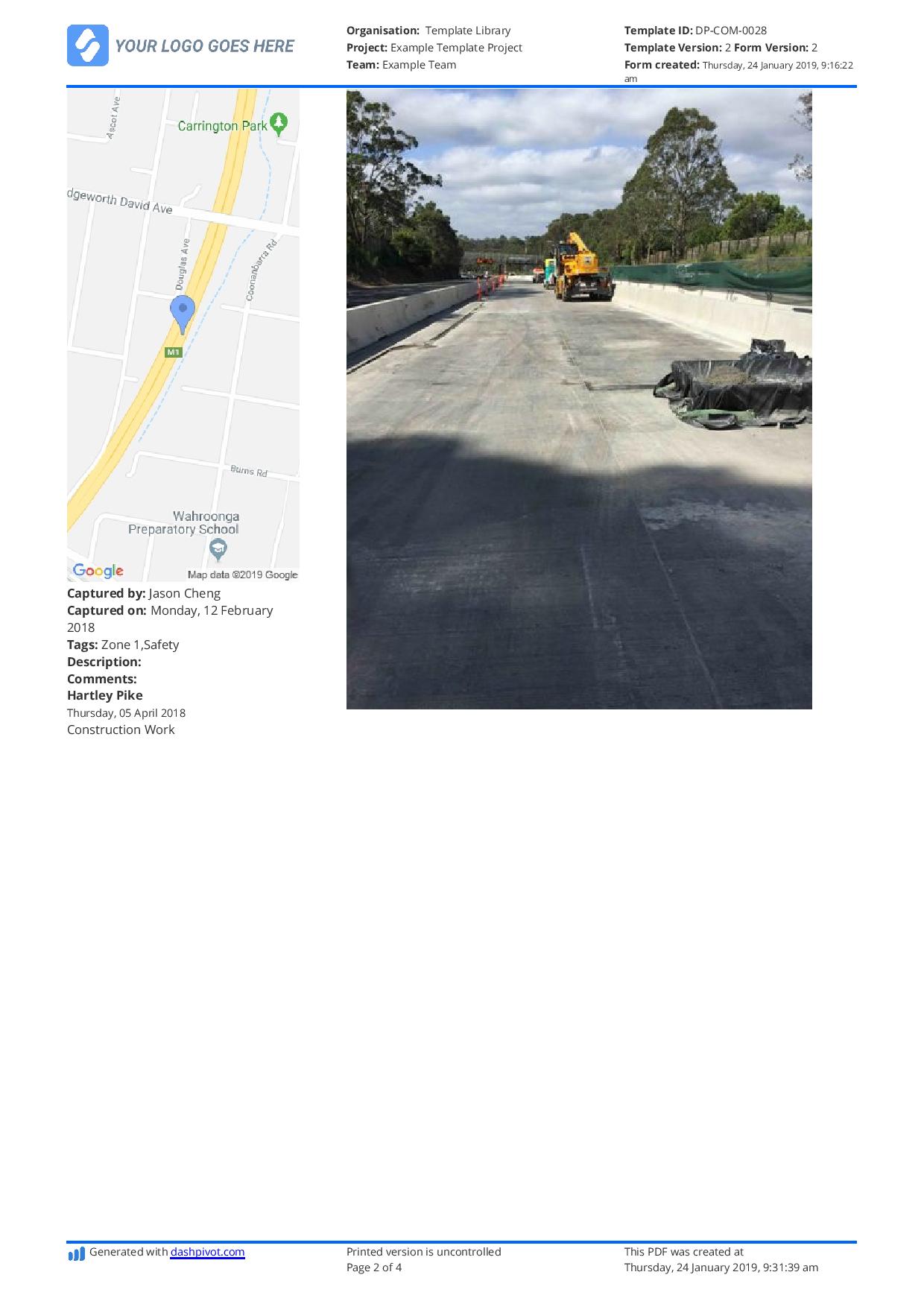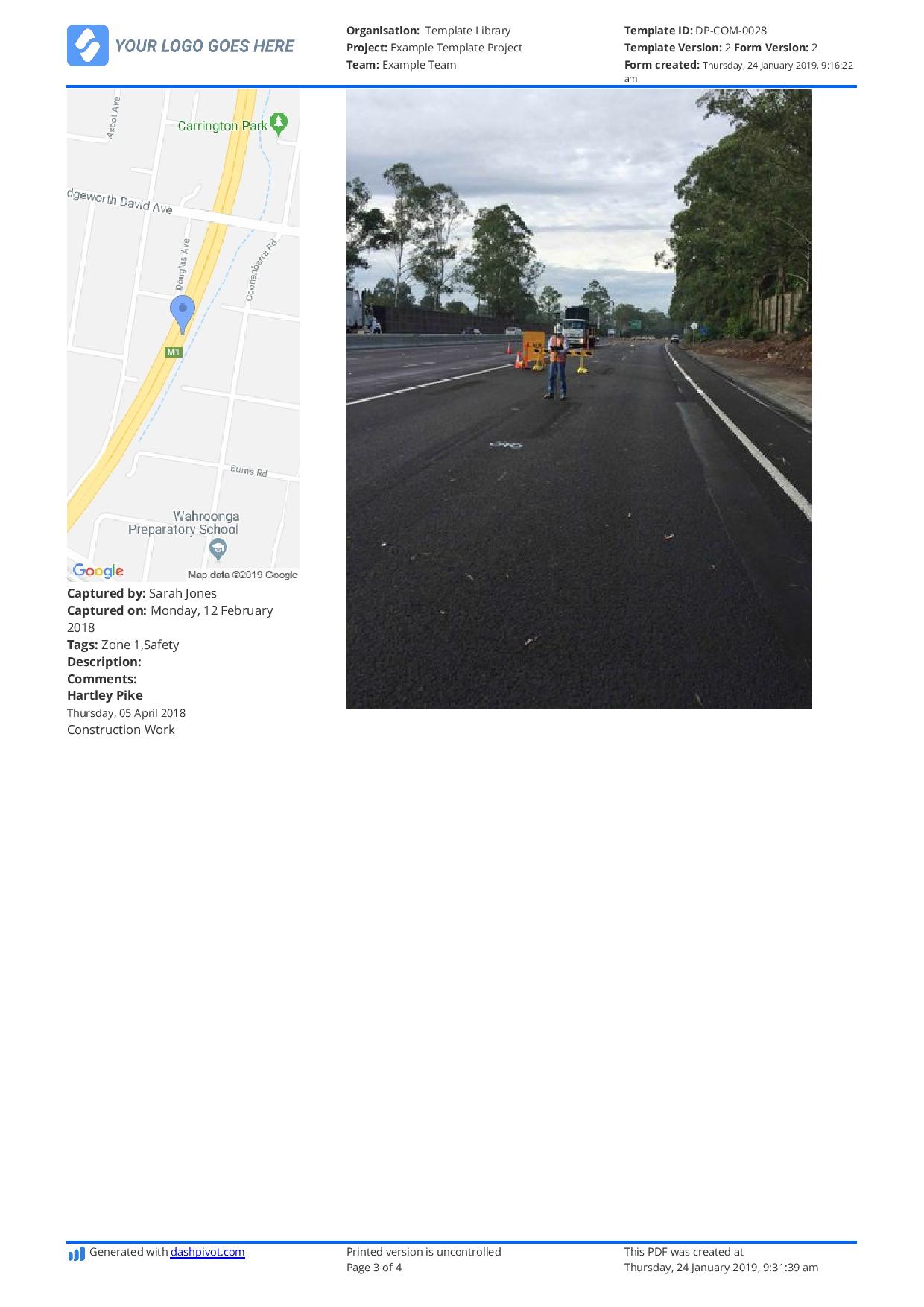Dashpivot article – Purpose of Site Visit Report
Purpose of Site Visit Report
In this article, learn about the purpose of a site visit report, including its importance, key components, and how to create a detailed and effective report to document on-site observations and activities.

What is the purpose of a Site Visit Report?
Professionals, inspectors, or anyone involved in the project or site rely on site visit reports as they provide comprehensive details, information, and records of site observations, but you may still ask the question - what is the purpose of a site visit report?
At a fundamental level, a site visit report as a document is the communication tool to share project progress, identify risks that need corrective actions, and ensure regular compliance with safety and standards.
With having regular site visits and well-documented site visit reports, it’s easier to identify issues early on and enable on-site personnel to intervene and perform immediate corrections preventing delays. Its use is for effective project management and communication between stakeholders to make informed decisions.
Inspectors, projects managers, and site personnel who write site visit reports must ensure that they are written in full detail. It offers accurate insights to the project and site status, ensure accountability, and facilitate communication of what’s happening on the site.
How Do Site Visit Reports Document Observations?
The observations section of a site visit report should be organized by specific focus areas, which helps inspectors in providing detailed and structured content. For specifics, they could include safety compliance, project progress, equipment use log, and site conditions.
These specific areas are laid out in the site visit report. It’s in the inspector or visitor’s discretion to use objective data in the objectives section. Details should be organized properly depending on the purpose of the report or of importance, and describing situations using clear, unbiased, and understandable language.
How Do Site Visit Reports Ensure Compliance and Provide Accountability?
Site visit reports verify safety, environmental, and regulatory standards are being met by using checklists, reviewing documentations, and mainly through direct observation, which drives much of the purpose behind site visit reports vs. other site-based paperwork.
The report is the guide for inspectors to review permits, certifications, and compliance documents with local regulations, industry standards, and building codes.
Completing site visit reports religiously creates accountability for stakeholders, workers, and contractors holding all involved professionals responsible for their roles. Stakeholders are responsible for making informed decisions and verify regulations are followed based on the observations and issues documented in the site visit report. Workers and contractors are responsible for making sure that the tasks are completed on time in the best work quality and safety protocols are being followed.
One of the main purposes of a site visit report is for formal reference, ensuring compliance and creating accountability across all persons involved in the project or site.
Purpose of a Site Visit Report in terms of Risk Management
Site visit reports play an essential role in risk management as the document provides a section in identifying potential hazards, non-compliance concerns, delays, and deviances in the project or site. This report is a tool in managing and mitigating risks throughout the project or site lifecycle.
These sections allow inspectors and visitors to detail unsafe conditions, deviations, and non-compliance. It’s important for inspectors and visitors to know that site visit reports serve as early warning documents for premature issues. Risk management in projects or sites focus on developing strategies that minimise issues or completely eliminate their effects on site and site visit reports serve as a medium to document these issues.

Use and customise this free Site Visit Report yourself for free
Why Are These Reports Essential for Project Managers, Investors, and Stakeholders?
We now understand what the general purpose of a site visit report is, but you can breakdown that purpose further based on the stakeholder completing it.
Project managers use a site visit report as a tool to monitor the progress and timeline of projects, and ensure all standards are met. Investors are dependent on site visit reports to assess the financial health of the projects.
It’s important that investors know that the projects are aligned with the budget to protect their investments. Stakeholders, like regulatory bodies or clients, is a communication tool that assures transparency especially with regulations and contractual obligations.
What's the Purpose of Site Visit Reports for Regulatory Bodies?
Regulatory bodies use site visit reports and other documentation to ensure that the project or site is meeting the legal requirements without any violations. They also use the reports to monitor any ongoing compliances and decide whether a project or site can be granted with other certifications, permits, and approvals. The main goal is to ensure that the project or site operates and complies with the law.
It’s essential that site visit reports are as detailed as possible not only for internal use, but for regulatory bodies’ site and project assessment. Photos, charts, and other visual evidence should be present in the reports to avoid miscommunication and delays in formal assessments.
Regulatory bodies review these reports thoroughly therefore the recommendations and conclusions should meet the regulations and standards. Additionally, regulators may also recommend corrective measures and schedule for follow-up inspections, whether internally or by the regulatory body.
How Can You Ensure Your Site Visit Reports Fulfil their Purpose?
There are a couple of key steps that ensure site visit reports are effective in communicating the project details to stakeholders, workers, contractors, and investors.
A site visit report must be well-structured with a standardised site visit report format and consistent sections to make data entry and taking information easier. The details in the section should be specific and measurable, using facts and evidence to support the claims. Recommendations should also be practical, actionable, and feasible, which makes it easier for stakeholders to decide the next steps.
Observations must be objective, not vague or subjective. The report should overall be unbiased and reliable. In order to ensure the corrective actions are implemented as soon as possible, the report should be submitted promptly while the issues are still fresh or in the early stages.

Site diary template
Complete and organise your daily diaries more efficiently.

Meeting Minutes template
Capture, record and organise those meeting minutes.

Progress Claim template
Streamline and automate the progress claim process to get paid faster and look more professional.

